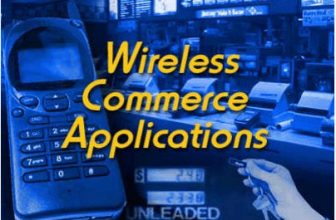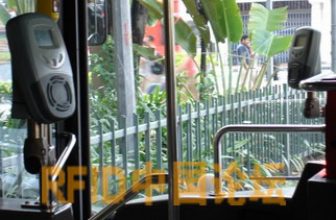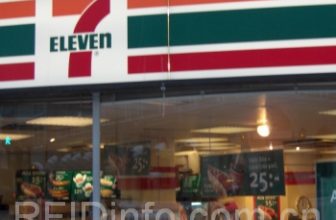
Two major banks in China use RFID technology to track assets, cash cabinets and serve VIP customers
[ad_1]
China Construction Bank is currently using electronic tags that comply with the EPC Gen2 standard to manage its equipment in the data center. At the same time, Bank of China also uses 433MHz active electronic tags to identify its cash cabinets and important customers.
Two major banks use RFID systems
Hongba Digital RCG Holdings (hereinafter referred to as RCG) is a provider of RFID products and services focusing on the Asia-Pacific market. Currently, it has launched three new RFID systems and applied them to Bank of China and China Construction Bank to help these financial services. Institutions improve safety and customer service quality. According to RCG, this deployment is the first time its RFID technology has been applied to the financial services sector. RCG plans to extend the radio frequency identification system to banks in other regions of China in the future.
China Construction Bank in Hong Kong is launching an asset tracking system to track high-value IT equipment in data centers. Bank of China has also adopted a cash cabinet tracking and VIP management system. But the two banks declined to comment. Sri Hartati Kurniawan, chief technology officer of RCG, said, “RFID providers have already begun discussions with other financial departments.”
“Once other financial services companies see their competitors applying advanced RFID technology, they will immediately realize that the benefits of this technology should not be underestimated. Although the first RFID system developed by RCG faces some challenges, it is expected to be In the future, the promotion of this system will be easier, so we hope to be able to introduce RFID technology in other financial institutions.”
CCB trial asset and data security management system
At present, China Construction Bank is trialing RCG’s asset and data security management system in the bank’s data center, and is the first financial service department to apply this technology. RCG expects and hopes that the RFID system will be fully operational within 3 months. The passive ultra-high frequency (UHF) tags in the system are attached to IT assets. These tags operate at 900MHz to 930MHz, comply with EPC Class 1 Gen 2 standards, and are specially designed for metal interference. The system integrates location monitoring and tracking, data security, and access control to improve the security of the bank’s IT assets.
Kurniawan explained, “CCB is a large bank, and its data center contains thousands of valuable assets. With the rapid increase in the number of assets, it has become difficult to manage assets and there is no traceability system for the personnel who moved the equipment. Because of the rapid increase in the number of assets. The barcode system cannot track the goods and cannot provide real-time monitoring, so RFID technology will replace it.”
Kurniawan said, “Detecting the flow of IT assets at any time will undoubtedly greatly improve efficiency and reduce costs. Tracking valuable assets is not a waste of time, but a process that is actually needed, and it can also prevent unnecessary purchases caused by equipment misplacement. Real-time monitoring Assets can also provide higher security, and have anti-theft functions, because banks can know exactly who is entering and leaving the server room at any time, where the equipment is being transferred, etc. This information is well known.”
RCG develops UHF RFID readers and antennas, which are installed in server racks and other locations to monitor servers and other IT equipment. RCG is also working with HP to develop application management software for data storage and analysis.
As RFID tags are applied to IT assets, detailed information about the location of the assets is stored in the database. The application software periodically triggers the reader to read the RFID tags and collect the data, which is then forwarded to the application software, and the asset flow is analyzed and stored in the database.
Kurniawan said, “We are currently testing the system in an on-site environment to ensure that the asset information matches the tag 24/7. When the item is moved, the warning will sound.”
Cash cabinet management system and VIP management system
At the same time, Bank of China also introduced the RCG cash cabinet management system to improve the safety of cash cabinets transported to other branches. In addition, RCG’s VIP management system is adopted to provide better services to the most valuable customers.
Kurniawan said, “The cash cabinet management system uses RFID technology to track and track the transfer of cash cabinets throughout the bank between departments. The cash cabinets often contain a large amount of cash, so a guard is required to accompany them during the transfer. RFID technology is used. Later, when the cash box arrives at the bank, the security will be reminded of this information and take relevant safety measures. In addition, the exact transportation route of the cash box can also be inquired, which greatly improves security.”
An active 433.96 MHz RFID tag is attached to the cash cabinet, which is specially used for attaching metal. The tag uses a proprietary air interface protocol to communicate with RFID readers connected to a pair of unidirectional antennas installed at the entrance of the bank to detect the departure and arrival of each cash cabinet. Omni-directional antennas are also installed in the bank to track the traces of the internal cash cabinet.
Each tag periodically sends out a signal containing a unique ID number, and this activity is executed by RCG’s tailor-made application software. The location of the cash box is constantly updated and stored in the application’s database. The software includes analysis tools and can also be used to determine the path of action.
The VIP management solution provides VIP customers with proprietary bank badges, embedded RFID chips, and stored customer ID numbers and other related information.
Kurniawan said, “Retail banking is becoming more and more competitive. Many banks try to differentiate themselves from their competitors and provide better services to customers. Bank of China has the courage to innovate and deployed a VIP management system. When customers enter Bank of China At the time, RFID technology can confirm whether the customer is a VIP customer, and remind staff to quickly retrieve client data, including what kind of service VIP customers usually handle. Banks can provide more personalized services in the first time, which is highly appreciated by IP customers. “
The specific process of the VIP management system is as follows: The VIP badge is attached with the same active tag of 433.96 MHz as the cash drawer management system. When the VIP customer arrives at the bank, the active reading device and one-way antenna can detect the VIP customer. Once VIP customers enter the bank’s door, their personal information, including their name, history, and recent transactions, will be immediately retrieved from the tailor-made application software database. VIP customer information is obtained from the local database and sent to the customer relationship manager, who personally greets the VIP customer, which greatly improves the VIP customer experience.
[ad_2]






